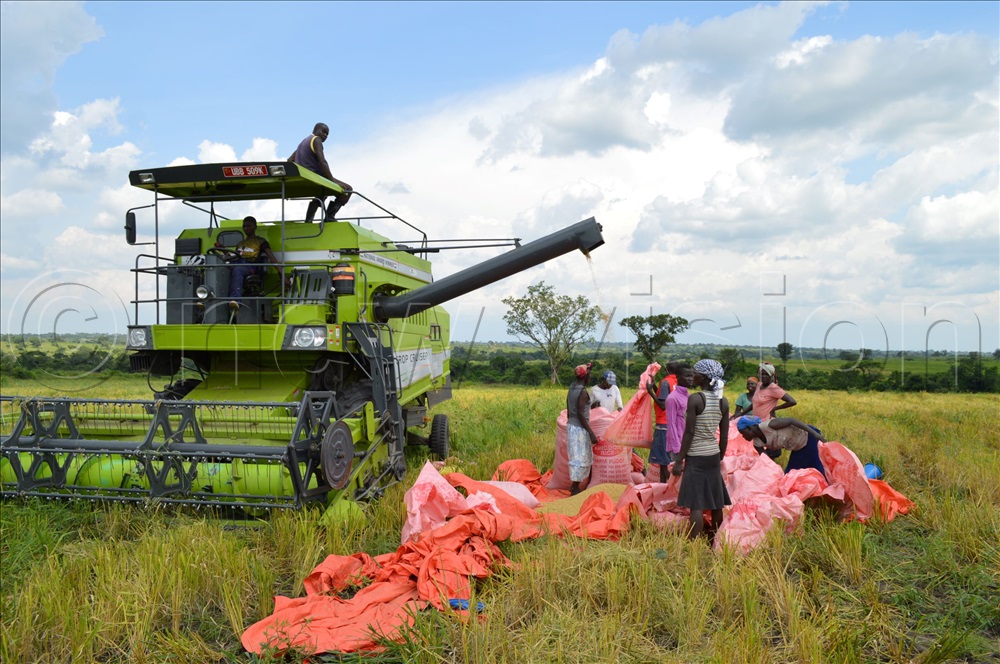By Umar Nsubuga
A combined harvester is an essential machine for commercial farmers, especially those growing cereal crops like wheat, rice, barley, and maize.
Alvin Katungi, the General Manager of Zeus Agro Limited says when you go into commercial, a combined harvester is a must-have because it increases efficiency.
He says it performs three critical tasks; reaping, threshing, and winnowing in a single operation. This reduces the time and labour needed for harvesting, and it allows a farmer to cover more land in less time.
He explains that a combined harvester reduces labour costs by mechanising the harvest.

“Farmers can save on labour costs, as fewer workers are needed compared to manual harvesting. This is especially important for large-scale commercial farmers who deal with vast fields,” he says.
Katungi also says that a combined harvester improves crop yield, ensures a more precise and clean harvest, and reduces grain loss during collection. This leads to higher yields and better-quality grain, which can command a premium price in the market.
Harvesting crops within the ideal time window is crucial for maintaining crop quality. Katungi explains that a combined harvester speeds up the process, allowing farmers to complete their harvests quickly, even during short favorable weather periods.
Knud Nielsen, a modern commercial farmer who owns a combined harvesters says modern combined harvesters are often designed to handle multiple crops by adjusting settings.
He says this flexibility allows commercial farmers to use the same machine for different crops in rotation, such as wheat, rice, and barley.
“Manual harvesting can lead to significant grain loss, either from improper cutting or delays in threshing. A combined harvester minimises these losses, helping farmers retain more of their crops,” he explains.
Harvesting is physically demanding and time-consuming. A combined harvester reduces manual labour, making it easier to manage large-scale farming without overburdening workers, he says.
Nielsen says although the initial investment in a combined harvester can be high, its ability to increase efficiency, reduce labour, and improve yields makes it cost-effective in the long run, particularly for large commercial operations.
“Many modern combined harvesters come equipped with Global Positioning System (GPS) and precision farming technologies, allowing farmers to monitor yields in real-time, adjust their practices, and improve overall farm management for future planting cycles”, Nielsen says.
By speeding up the harvesting process, he says farmers can prepare their fields more quickly for the next planting cycle, ensuring better land utilisation and potentially higher income from more frequent crops.
“For commercial farmers, investing in a combined harvester boosts productivity, saves money, and enhances overall farm performance, making it a vital tool for scaling up operations,” he notes.





